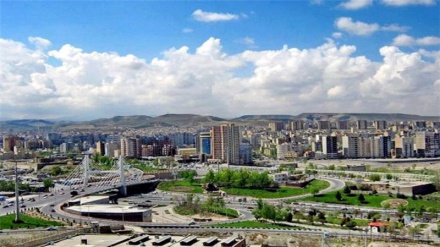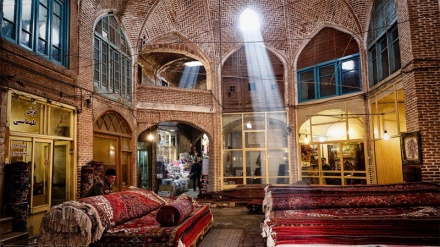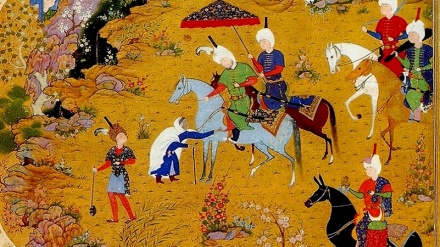Tabriz, 2018 (6)
Welcome to this week's episode of the series Tabriz, 2018. The Monastery of Saint Thaddeus and the Monastery of Saint Stepanos, are of further importance in comparison to other churches in Iran, in relation to the history of Christianity, arts, and architecture; and are considered as the two of most important tourist attraction sites in the vicinity of the city of Tabriz.
These religious sites, alongside the Islamic religious sites are manifestations of the peaceful coexistence of the monotheistic religions in Iran.
In addition to Zoroaster, who was an Iranian monotheistic prophet, all of the Abrahamic religions, including Judaism, Christianity, and Islam had followers in Iran since the advent of these religions. Naturally, the age-old presence of major global religions in Iran has left reminders across the Iran, which attest to the peaceful coexistence of religions in this country and are also included in the mankind's cultural heritage.
Churches in the two provinces of East and West Azarbaijan, and across cities such as Tehran and Isfahan are of significant and paramount importance, and in addition of being honored by all Christians, worldwide, are glorious and stunning monuments in regards to art and architecture. In the year 2008 AD, UNESCO enlisted a collection of roughly twenty churches and Christian prayer sites in Iran's Azarbaijan Province within the global cultural heritage sites.
Qare Kelisa (The Black Church) in Chaldiran Plain is one of the first Christian religious sites in Iran, which is referred to the Black Church due to its black stones. However, among the Armenians, this religious site in known as the Monastery of Saint Thaddeus. Thaddeus was one of the disciples of Prophet Jesus, who headed to India in order of promote Christianity. However, in mid-way of his journey, he passed away and was laid to rest in the present location of Qare Kelisa.
Saint Thaddeus Monastery maintains two inter-connected buildings in black and white colors, one of which is 700 years old, with the other dating back to 200 years ago. The ancient part of the current church belongs to Ilkhanid Era, concurrent with 14th Century AD. In the early years of the said century, a strong earthquake razed this monastery to the ground, with Arch Bishop Zakaria reconstructing this monastery, later on.
The western section of the monastery which is covered with white stones, was constructed 500 years later, based on political motivations. When in early 19th Century AD, the Russian Czar, under the pretext of supporting Caucasian Christians, raided Iran's soil, the Qajarid government which was fearful of sympathy between Armenians and Russians; both of which were Christians, made efforts to capture and win the hearts of Armenians. The Qajarid King, Fath Ali-Shah's Crown Prince, Abbas Mirza, who was also the commander of Iranian troops, expanded the Monastery of Saint Thaddeus to the west, and constructed a bell tower for it.
The black colored section of Qare Kelisa is decorated to a lower extent. However, the white colored section of this church is extensively decorated and ornamented, being rather unique and one of a kind.
The pictures of Prophet Jesus and his disciples, in addition to the picture of
Virgin Mary are observed in this church.
The presence of this monastery; the tomb of the Safavid King, Ismail's vizier, Seyed Sadr Ed-Din, and the martyrs of Chaldiran Battle, as well as other historical monuments, have turned Chaldiran into a tourist destination, which a large number of Iranian and foreign tourists head for, all year long.
The Saint Stepanos Monastery is the second most important church of Armenians in Iran, which is located at 17 kilometers west of the city of Jolfa.
The name of this monastery originates from the name of one of Prophet Jesus' disciples, Stepanos, who lost his life while promoting Christianity. The presence of this church in this region goes to show that the initial residents of the region were Armenians, who migrated from this region to another region after the break out of World War I.
Every year, this monastery is the center of gathering of Christians from different parts of the world, who pay a pilgrimage to this site, lighting candles, and observing their prayers. Many Armenians believe that the cornerstone of this monastery has been constructed by one of the twelve disciples of Prophet Jesus and is therefore of significant importance for them.
The city of Jolfa maintains chilly winters, and relatively warm summers, while having a mild climate in spring and autumn. Given that the distance between Tabriz and Jolfa can be covered by car in two hours, many of the travelers to city of Tabriz, also pay a visit to this historical monument.
In the vicinity of the city of Maku, next to a village named Baron, the Chapel of Dzordzor is situated, which was constructed by the arch bishop of Saint Thaddeus Monastery, turning into one of the religious, and cultural centers for the Christian Armenians in Iran.
The historical Mill Lee Mosque is one of the important mosques of Tabriz, belonging to Afsharid era, which is one of the symbols of the peaceful coexistence of monotheistic religions in this city. This mosque was constructed in the post-Safavid era, throughout the reign of Afsharid King, Nader Shah.
This mosque had been the gathering location of Shia Muslims, Sunni Muslims, and Jews, which shows the unity of the followers of these religions in this city in the past.
MR/SS


